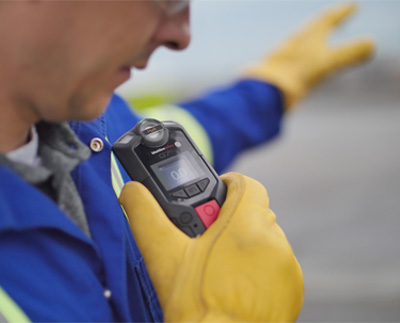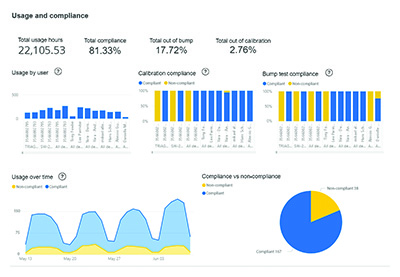Working confidently in confined spaces

Photo: Blackline Safety
Many workplaces in industries such as oil and gas, construction, and telecommunications have areas that are classified as confined spaces. These spaces were not designed for continuous occupancy but are large enough for workers to enter and perform a certain job when necessary.
Common confined spaces include large pipelines, manholes, tanks, tunnels and wells. They often lack resources you would normally find in areas designed for ongoing work, including proper ventilation systems, lighting, or points that allow for easy entry and exit. These less-than-ideal conditions create a higher risk for workers, as they are prone to atmospheric hazards such as exposure to a toxic gas leak, lack of oxygen or inconsistent communication with those outside of the space.

As a result, confined space work is closely regulated by OSHA. Despite the careful oversight, working in confined spaces remains a highly dangerous activity – 1,030 workers died from occupational injuries involving a confined space between 2011 and 2018, according to data from the Bureau of Labor Statistics. Although many of the fatalities are attributed to inhalation of harmful substances, unfortunately, some are related to human error during confined space entries.
To ensure their people can get their jobs done and return home safely each day, industrial organizations should incorporate connected safety into their worker safety programs. When considering solutions, such as connected wearables and area monitors, safety professionals should seek the following capabilities to take their programs to new, more reliable levels.
Simple, real-time compliance confidence
Simplicity is key. Your workers have enough to focus on during a confined space entry, and fumbling with a challenging interface or having to manually collect or send data doesn’t have to be one of them.

Safety solutions that connect instantly, from anywhere, deliver rapid reassurance into equipment compliance. All the employee or contractor needs to do is turn on the device and go about their work knowing their device is tested and working as it should.
Managers can also use these technologies to investigate the real-time compliance status of their entire fleet. Easily identify devices that are overdue for bump tests and calibrations, or about to be, to address noncompliance before it becomes dangerous.
A higher level of worker safety
When and where are your workers entering confined spaces? Where are they being exposed to gas, and where are leaks occurring? With data streamed directly from cellular and satellite-connected devices used during confined space entries, you’ll know.
Traditionally, when an entrant is in a space and the worst occurs, their safety is in the hands of their attendant. Emergency alert data streamed from connected safety wearables and area monitors provides a new layer of safety, communicating their alert status with monitoring personnel and management in the moment.
Improved workforce productivity
Businesses leveraging these systems also gain instant and complete visibility of the safety of their workforce and worksites at anytime and from anywhere. With devices that communicate constantly with the cloud, you can identify how, when and where devices are being used to understand worker behaviors, as well as optimize asset utilization and scheduling during confined space entry activities.
Reliable operation
You need confined space entry safety solutions that go where you need them to go and that you can trust to outlast your projects. Extended battery life of a system is a necessity, especially for organizations looking to reduce re-permitting of their confined spaces. This also saves money by eliminating the need for a backup fleet of systems to account for limited operating life.
Leading connected safety wearables and area monitors offer optional motorized pump options to seamlessly evaluate a confined space’s gas levels quickly before and during entry. These assets help organizations meet OSHA’s permitting requirements and enable individuals to work more efficiently.
Don’t just manage your CSE program, master it
Confined space work poses a variety of threats to workforces around the country. It’s imperative that organizations incorporate a proactive strategy for protecting workers in confined spaces by leveraging connectivity and easy setup to ensure safety at every moment.
Through an effective connected program, teams can operate safely, more efficiently and with greater confidence knowing they are protected under any circumstances.
By Shane McEwen, Global Product Marketing Manager, Blackline Safety
Post a comment to this article
Safety+Health welcomes comments that promote respectful dialogue. Please stay on topic. Comments that contain personal attacks, profanity or abusive language – or those aggressively promoting products or services – will be removed. We reserve the right to determine which comments violate our comment policy. (Anonymous comments are welcome; merely skip the “name” field in the comment box. An email address is required but will not be included with your comment.)

